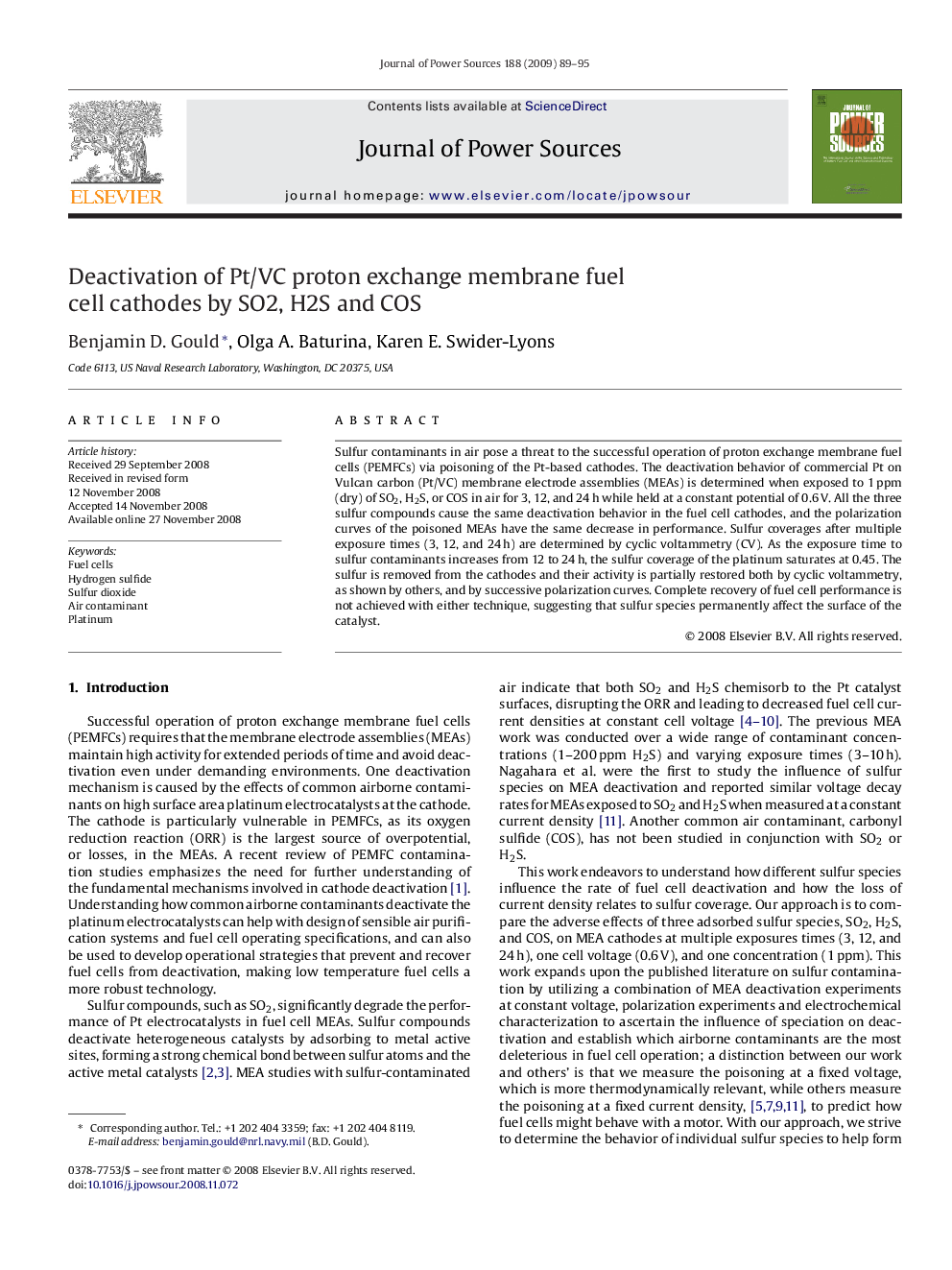| Article ID | Journal | Published Year | Pages | File Type |
|---|---|---|---|---|
| 1294318 | Journal of Power Sources | 2009 | 7 Pages |
Sulfur contaminants in air pose a threat to the successful operation of proton exchange membrane fuel cells (PEMFCs) via poisoning of the Pt-based cathodes. The deactivation behavior of commercial Pt on Vulcan carbon (Pt/VC) membrane electrode assemblies (MEAs) is determined when exposed to 1 ppm (dry) of SO2, H2S, or COS in air for 3, 12, and 24 h while held at a constant potential of 0.6 V. All the three sulfur compounds cause the same deactivation behavior in the fuel cell cathodes, and the polarization curves of the poisoned MEAs have the same decrease in performance. Sulfur coverages after multiple exposure times (3, 12, and 24 h) are determined by cyclic voltammetry (CV). As the exposure time to sulfur contaminants increases from 12 to 24 h, the sulfur coverage of the platinum saturates at 0.45. The sulfur is removed from the cathodes and their activity is partially restored both by cyclic voltammetry, as shown by others, and by successive polarization curves. Complete recovery of fuel cell performance is not achieved with either technique, suggesting that sulfur species permanently affect the surface of the catalyst.
